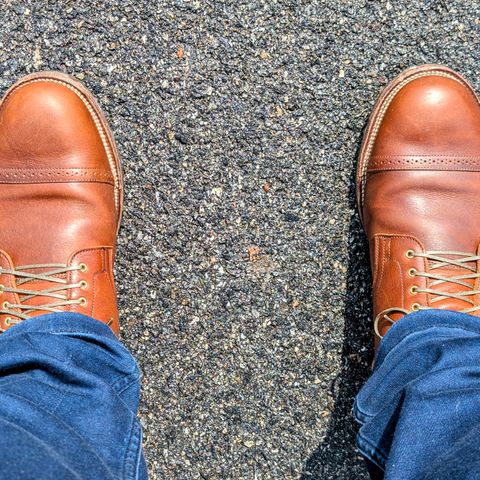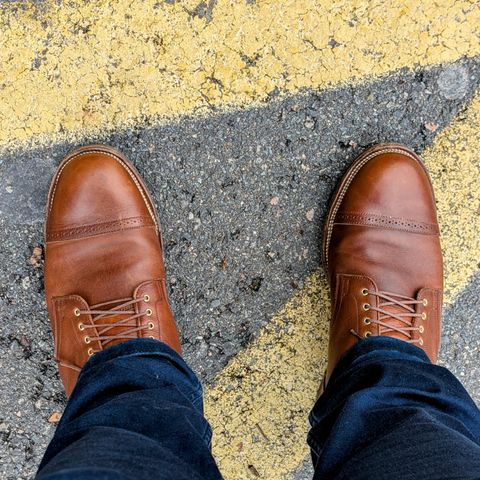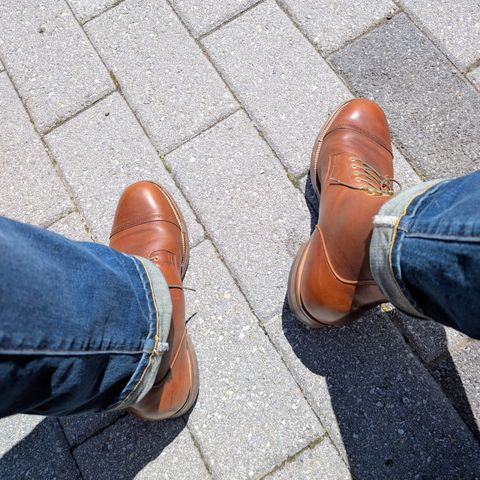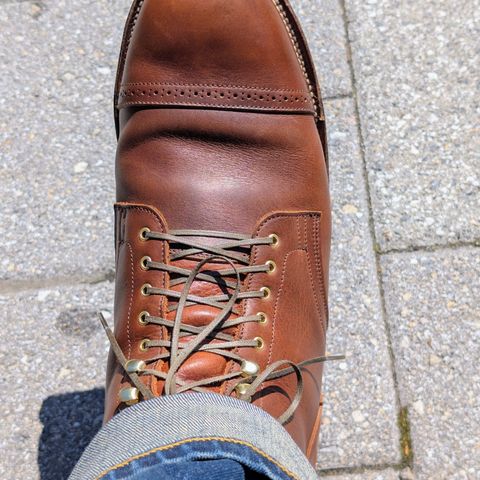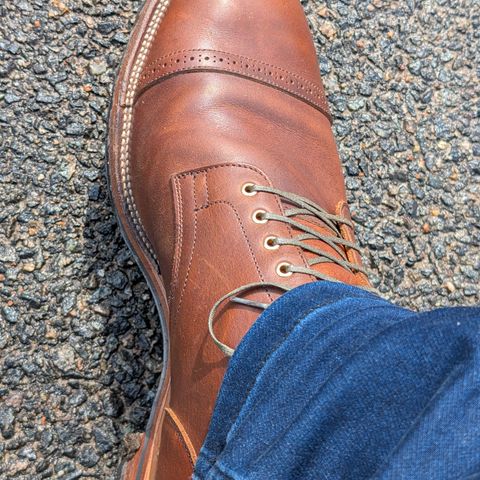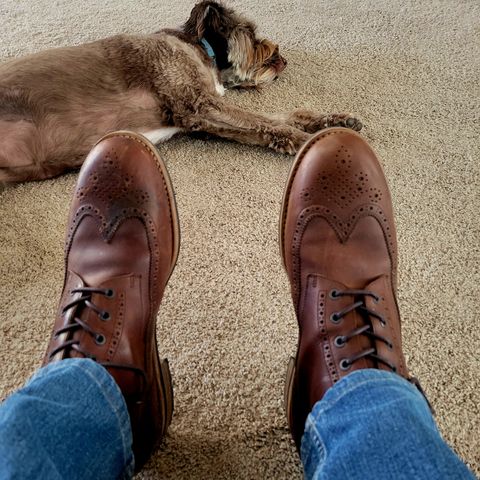About
Regency Calf is a full-grain leather produced by Charles F. Stead tannery in Leeds, England. Made from premium French calf skins, the leather features hand-antiquing and a natural wax finish, creating a smooth grain surface with rich color depth. The leather is fully aniline-dyed with deep pull-up characteristics, allowing it to develop distinctive patina through wear.
About
Regency Calf is a full-grain leather produced by Charles F. Stead tannery in Leeds, England. Made from premium French calf skins, the leather features hand-antiquing and a natural wax finish, creating a smooth grain surface with rich color depth. The leather is fully aniline-dyed with deep pull-up characteristics, allowing it to develop distinctive patina through wear.
Regency Calf is used by heritage footwear makers for boots and leather goods. The combination of hand-finishing techniques and natural wax treatment produces leather that ages with character while maintaining its refined appearance.
Material and specifications
Regency Calf is made from selected premium French calf skins sourced for their quality and grain structure. The leather weighs 3.5 to 4.5 ounces (1.4 to 1.8 millimeters) and is supplied in hides ranging from 16 to 18 square feet.
The leather undergoes heavy plating during production, creating its characteristic smooth grain aspect. This process compresses the grain surface while preserving the natural texture of the calf hide.
Finishing process
Charles F. Stead finishes Regency Calf through hand-antiquing, a technique that creates color variation across the leather surface. The antiquing process is followed by application of a natural wax finish that penetrates the leather structure.
The leather receives full aniline dyeing, meaning the dye penetrates throughout the hide without surface pigmentation. This dyeing method allows the natural grain pattern to remain visible and contributes to the leather's pull-up effect, where flexed areas temporarily lighten in color.
The finishing process includes a vintaged effect applied during the tanning stage, producing irregular color variations that blend and evolve as the leather ages.
Color options
Regency Calf is available in six standard colors:
Black
Caramel
Clove
Dark Snuff
Polo Brown
Whisky
Each color displays the leather's characteristic pull-up and antiquing effects, with variation in intensity and depth across the color range.
Aging characteristics
The leather develops patina through use, with high-wear areas showing accelerated color change. The full aniline dyeing and natural wax finish allow oils from handling and exposure to weather to alter the surface appearance over time.
The mixed coloring from the antiquing process gradually blends as the leather ages, while maintaining the contrast between worn and unworn areas. The pull-up effect becomes more pronounced with use, as flexing and creasing create temporary lightening that contributes to the overall patina development.
Applications
Regency Calf is used for footwear and leather goods where smooth grain leather with aging characteristics is desired. The leather's weight and thickness make it suitable for boot uppers and structured leather goods.
Heritage footwear manufacturers including Viberg use Regency Calf for service boots, Chelsea boots, and other styles where refined grain leather with patina potential is specified.
References
"Regency Calf". Charles F Stead and Co Ltd. Retrieved September 30, 2025.
"C.F. Stead Regency Calf Leather". The Tannery Row. Retrieved September 30, 2025.
"A visit to the C.F. Stead tannery in the UK". FashionNetwork. Retrieved September 30, 2025.
"Heritage". Charles F Stead and Co Ltd. Retrieved September 30, 2025.
